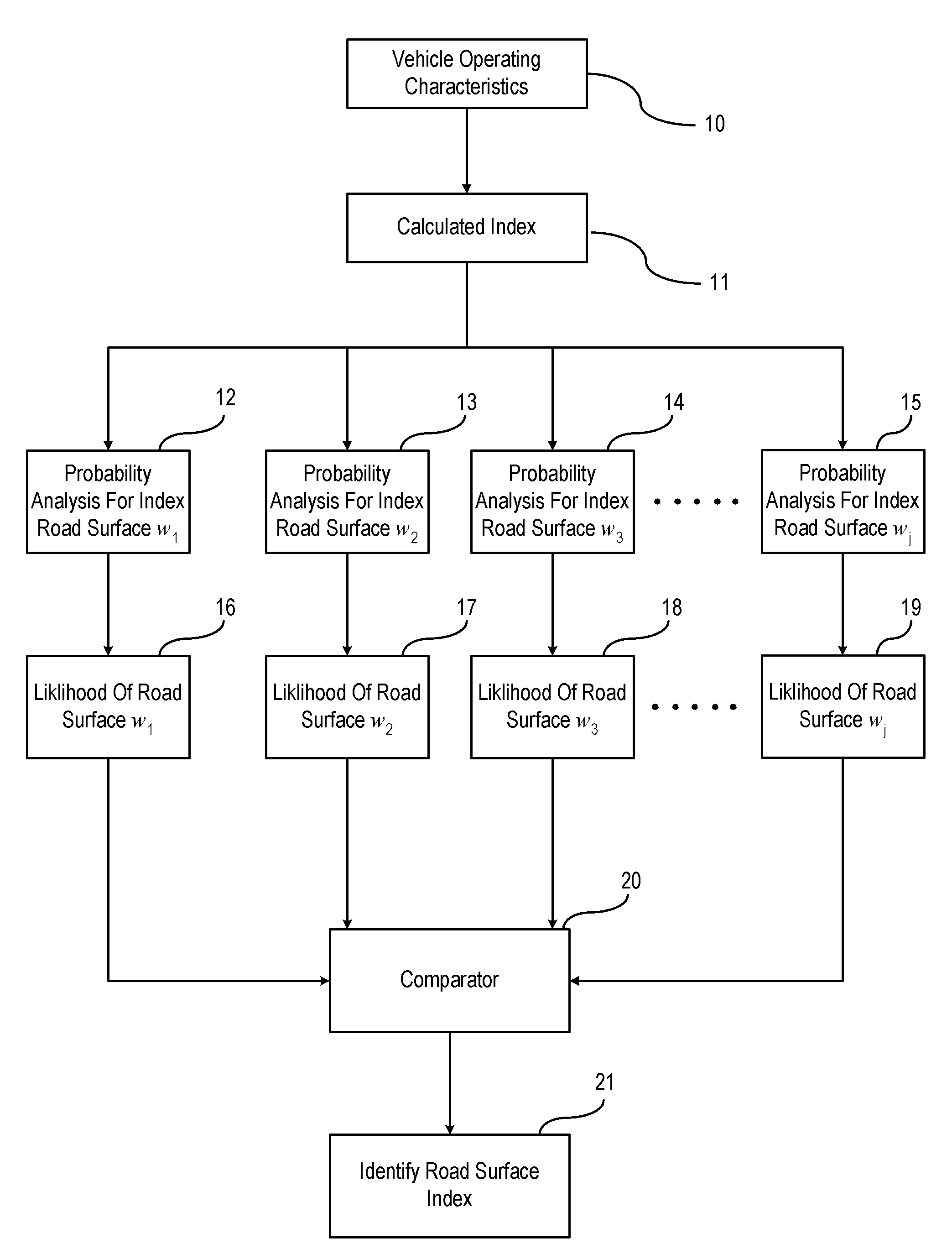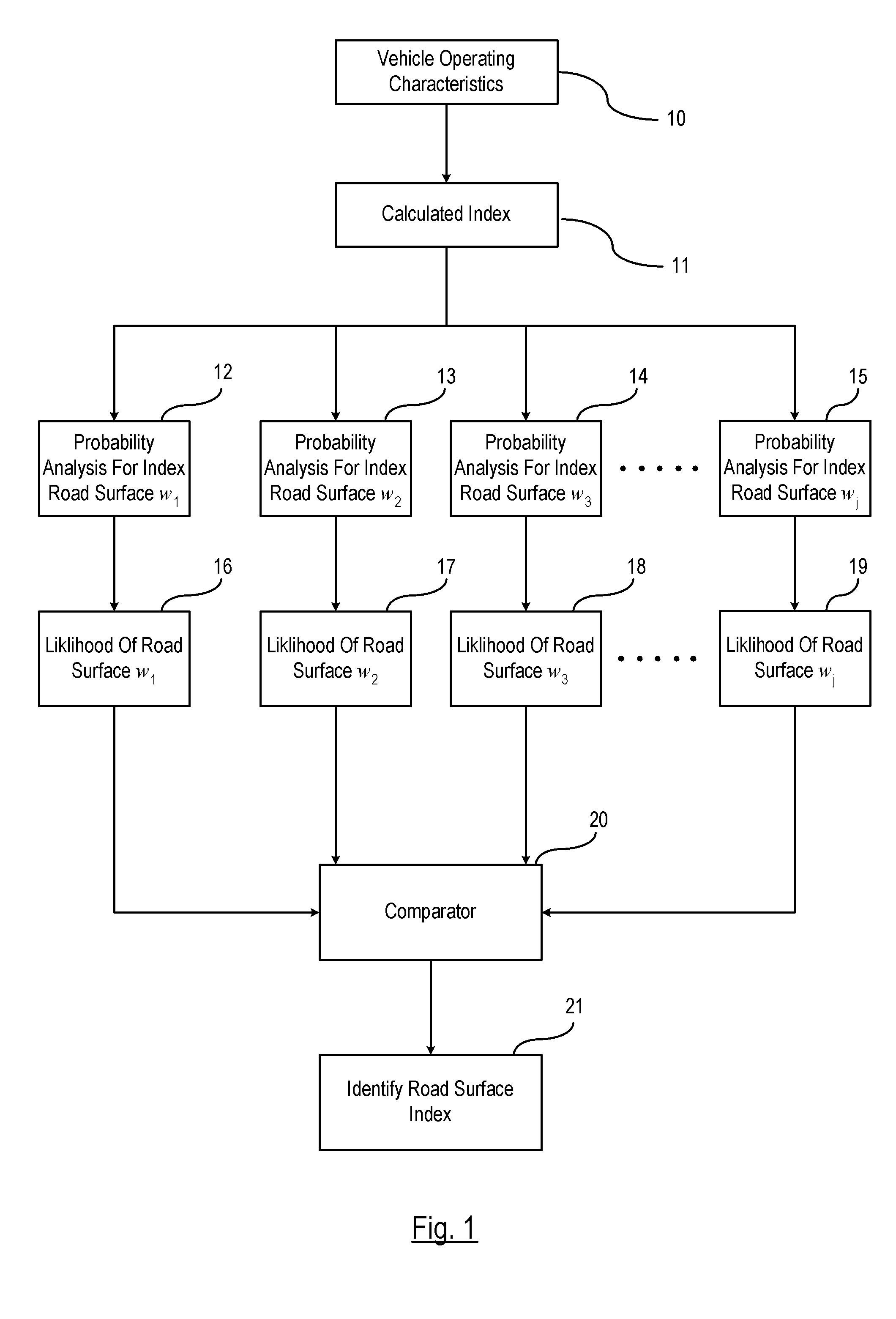Road Surface Condition Identification Based on Statistical Pattern Recognition
a technology of condition identification and road surface, applied in the direction of brake systems, process and machine control, instruments, etc., can solve the problems of not being practical, approach can be rather complicated, approach typically requires extra sensors, etc., and achieve the effect of minimizing cost and complexities
- Summary
- Abstract
- Description
- Claims
- Application Information
AI Technical Summary
Benefits of technology
Problems solved by technology
Method used
Image
Examples
Embodiment Construction
[0013]FIG. 1 is a broad flow diagram illustrating the road surface condition identification technique set forth in an embodiment of the invention. The road surface condition identification technique is conducted under normal driving conditions and identifies an adhesive effect of a road surface condition from one of a plurality of possible road surface adhesive conditions. It is understood that normal driving conditions include a vehicle driving along a road where no evasive maneuvers are required. The road surface condition identification technique estimates the adhesive effect of a road surface based on a determined index of each known road surface condition stored in memory and determines the likelihood of each adhesive effect being the condition of the current traveled road. It should be understood that the likelihood as described herein is only one embodiment of the invention and may be identified in more ways than described herein.
[0014]The estimation technique described herei...
PUM
 Login to View More
Login to View More Abstract
Description
Claims
Application Information
 Login to View More
Login to View More - R&D
- Intellectual Property
- Life Sciences
- Materials
- Tech Scout
- Unparalleled Data Quality
- Higher Quality Content
- 60% Fewer Hallucinations
Browse by: Latest US Patents, China's latest patents, Technical Efficacy Thesaurus, Application Domain, Technology Topic, Popular Technical Reports.
© 2025 PatSnap. All rights reserved.Legal|Privacy policy|Modern Slavery Act Transparency Statement|Sitemap|About US| Contact US: help@patsnap.com



